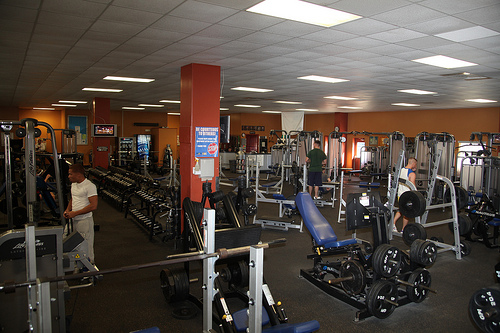
Why You Need A Schedule, Or, Failing To Plan Is Planning To Fail
Picture this: Tom hits the gym for an hour or so a couple of times a week, knocks out a few of his favorite movements and hops on the rowing machine or treadmill till he remembers he's supposed to be somewhere. Jerry goes at the same time daily with a plan in one hand and a journal in the other and pends the time between sets carefully noting his progress, any injuries and thoughts on how to improve. Tweety-Pie (yes, there is a theme) goes for a few weeks, daily like Jerry, but his plan involves multiple variations of the same exercise in the same session, huge improvements in a short time and tkes him three hours a day to get through! Fast forward a year, and what do we expect to find? Tom's in the same place, Tweety-Pie's quit in disgust. Only Jerry is making consistent progress. Plans need to be realistic, they need to be changeable based on circumstances - but if you don't have one, you have no way of knowing whether you're making any real progress or not.
- Important notification about information and brand names used in this slideshow!
- Photo courtesy of CherryPoint by Flickr : www.flickr.com/photos/mcas_cherry_point/6714757991/
- www.buzzle.com/articles/bodybuilding-workouts-for-men.html
- http://qbxfitness.com/603/bodybuilding-workout-and-exercise-schedule/

Isolation Exercises: You Know You Shouldn't, But If You Must...
The shoulder is a large, complex joint and elements of it extend as far as the mid back and the base of the skull, the spine and the elbow. The three heads of the deltoid muscle group (meaning 'D-shaped' in Greek) cover the top of the upper arm, and they're involved every time you move your arm. That means chest exercises, arm exercises and upper back exercises all involve the shoulder too. But the muscles at the top of the arm deserve their own attention. The deltoids work to move the head of the humerus, the bone of your upper arm, and they're opposed by the rotator cuff which works to stabilize the humerus. I know a lot of people reading this thing 'rotator cuff injury' is all one word, but it doesn't have to be that way. Add some rotator cuff pre-hab into your shoulder training and be careful of form, and you can train both hard and safe. One-arm Overhead Press: Press standing, not sitting. Holding a dumbell on your shoulder and the front of your chest, press it overhead and return to the start position. At the top, you should be looking forward, not up at the...
The shoulder is a large, complex joint and elements of it extend as far as the mid back and the base of the skull, the spine and the elbow. The three heads of the deltoid muscle group (meaning 'D-shaped' in Greek) cover the top of the upper arm, and they're involved every time you move your arm. That means chest exercises, arm exercises and upper back exercises all involve the shoulder too. But the muscles at the top of the arm deserve their own attention. The deltoids work to move the head of the humerus, the bone of your upper arm, and they're opposed by the rotator cuff which works to stabilize the humerus. I know a lot of people reading this thing 'rotator cuff injury' is all one word, but it doesn't have to be that way. Add some rotator cuff pre-hab into your shoulder training and be careful of form, and you can train both hard and safe. One-arm Overhead Press: Press standing, not sitting. Holding a dumbell on your shoulder and the front of your chest, press it overhead and return to the start position. At the top, you should be looking forward, not up at the dumbell. Bent - Over Lateral Raise A lateral raise mans raising the weights, usually dumbells, out to the side. A bent-over lateral raise means lying face down on a weights bench at about 45 degrees and doing the same movement. Let the dumbells hang in front of you, then raise them slowly and with control out to the sides til they're parallel with your ears. Point your thumbs forward to impact the back portion (posterior head) of your deltoids more. Hammer Curls: Every guy likes to curl, it seems, but there's a tendency to forget that the forearm flexors play a part in bending the elbow. Hold a dumbell - or an actual hammer, if you like - in your hand with your palm facing inwards (neutral grip) and perform a curl without letting your wrist bend. You get many of the benefits of a traditional curl with a stronger forearm and wrist too, meaning more functional strength.
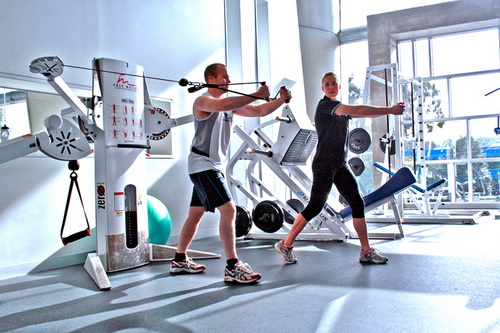
Cables And Bands: Easy Ways To Take Advantage Of Them
Cables and bands can be genuinely useful training tools. Here's how to start taking advantage of them. Band Pull-Aparts Most of us have slumped upper backs, with weak scapular retractors. Band pull-aparts can help to rectify that. Stand erect with your arms outstretched in front of you, holding a band by its two ends. Making sure to keep your shoulderblades pulled down, pull your arms apart, keeping them straight, until you're in a 'crucifix' position. Return and repeat. It's s simple movement but it has great benefits and you can add it to your warmup or put it in between sets. Cable Oblique Twists ('Wood Choppers') Stand side-on to the cable machine, holding the handle in both hands with your fingers interlaced. Adopt a wide stance and twist through the full range of a waist turn using your legs and waist to power the movement, keeping your arms straight. This exercise can help correct rotations in the spine as well as strengthening the lats and core.
- Important notification about information and brand names used in this slideshow!
- Photo courtesy of www.localfitness.com.au by Wikimedia Commons : en.wikipedia.org/wiki/File:Personal_Training_at_a_Gym_-_Cable_Crossover.JPG
- www.muscleandstrength.com/workouts/advanced-bodybuilder-workout.html
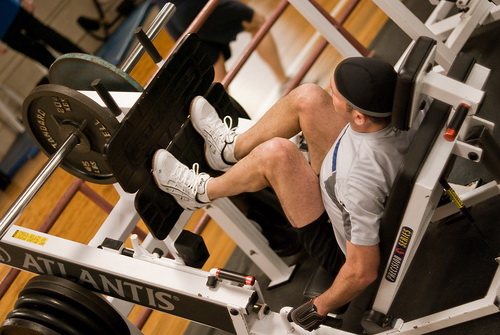
Exercises For The Legs
Legs exercises are catered for by a wide range of machines and an equally wide range of crazy squat variations. But it's not a bad idea to learn to do a good solid bilateral squat before you start getting interesting. The Squat Stand with your feet shoulder width apart. Your toes should face forwards or slightly out - up to about 45 degrees is fine. They should never point in. Darw yourself up with your back straight and shoulders back, puffing your chest and relaxing your neck. Start the movement by sitcking your butt out. Your tailbone will lead from here. Try to keep your back as erect as possible, don't let it bend. Lower yourself until your hamstrings touch your calves, then drive up to the original position. Think about pushing the floor away rather than standing up. Some people find that when doing unweighted squats they like to hold their hands in front of them for balance, and that's fine. You need to make sure that you aren't rounding your lower back out at the bottom of the movement, too. Only go down as far as you can with good form and pull yourself a little lower every...
Legs exercises are catered for by a wide range of machines and an equally wide range of crazy squat variations. But it's not a bad idea to learn to do a good solid bilateral squat before you start getting interesting. The Squat Stand with your feet shoulder width apart. Your toes should face forwards or slightly out - up to about 45 degrees is fine. They should never point in. Darw yourself up with your back straight and shoulders back, puffing your chest and relaxing your neck. Start the movement by sitcking your butt out. Your tailbone will lead from here. Try to keep your back as erect as possible, don't let it bend. Lower yourself until your hamstrings touch your calves, then drive up to the original position. Think about pushing the floor away rather than standing up. Some people find that when doing unweighted squats they like to hold their hands in front of them for balance, and that's fine. You need to make sure that you aren't rounding your lower back out at the bottom of the movement, too. Only go down as far as you can with good form and pull yourself a little lower every training session. Split Squats If you have trouble with your bilateral squat or you're new to training or you just want to mix things up a bit, split squats can be a great way to add some load and get some variation. Put one foot up on a bench, with the sole facing up and the instep on the bench. The other foot should be a long stride away: you're going to lower yourself between your feet here so leave some room! Try to lower yourself until your back knee touches the floor. Your back leg will be doing some of the work here, and that's fine: it's a good side benefit that you can get a loaded stretch on the back leg's hip flexor when you do this exercise. Remember to keep your back straight. If you want to add weights - and you should - it's best to use dumbbells for this one.
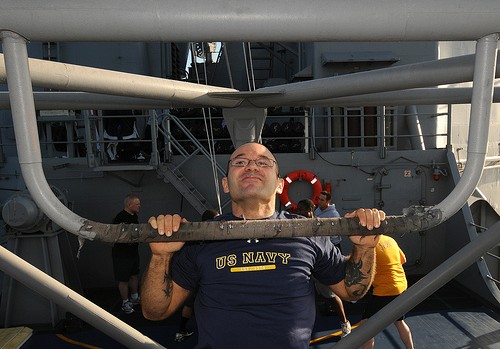
Pulling Exercises: The Most Important, Most Neglected Exercises For Size And Strength
Pulling exercises all to often get shouldered aside to make more room for bicep curl variations and extra benching. But the pull movement pattern is key to building strength and stability, and training it should bring gains in appearance too. Unless you don't want big, strong lats and powerful shoulders? OK, thought so. The Bent Row: It's a classic for a reason. The Bent row involves some leg action and lower back involvement to hold the position but it's mostly a pulling exercise for the upper back. You can do it with dumbbells, kettlebells, a barbell or small children. The method outlined below is for a barbell bent row; for other weights types, adjust accordingly. Stand with your feet about shoulder width apart, with your hands gripping the barbell palms down and shoulder width or slightly wider. Bend your knees slightly and bend forward from the hips, not the waist. That means your back might not be vertical - you should be at about 45 degrees to the floor -but it should be straight, with a good arch in the lower back especially. Don't let your spine lean forward. Keep your shoulders back and 'packed' into your back - think...
Pulling exercises all to often get shouldered aside to make more room for bicep curl variations and extra benching. But the pull movement pattern is key to building strength and stability, and training it should bring gains in appearance too. Unless you don't want big, strong lats and powerful shoulders? OK, thought so. The Bent Row: It's a classic for a reason. The Bent row involves some leg action and lower back involvement to hold the position but it's mostly a pulling exercise for the upper back. You can do it with dumbbells, kettlebells, a barbell or small children. The method outlined below is for a barbell bent row; for other weights types, adjust accordingly. Stand with your feet about shoulder width apart, with your hands gripping the barbell palms down and shoulder width or slightly wider. Bend your knees slightly and bend forward from the hips, not the waist. That means your back might not be vertical - you should be at about 45 degrees to the floor -but it should be straight, with a good arch in the lower back especially. Don't let your spine lean forward. Keep your shoulders back and 'packed' into your back - think of drawing your shoulderblades down your back. Now pull the barbell toward your own trunk, stopping when the bar touches you. That 'rowing' action is how the lift got its name. The Pull-Up Another excellent pulling exercise is the humble pullup. It's surprising how many people can't do even one decent pullup. Hang from the bar with your palms facing away from you, and start your pull by pulling your shoulder blades down. Then think about pulling your elbows down to your hips, not yourself up to the bar. Relax your neck: don't 'nod' your way over the bar. When the bar touches your sternum, the bone in the centre of your chest, that's one pullup.
- Important notification about information and brand names used in this slideshow!
- Photo courtesy of Official U.S. Navy Page by Flickr : www.flickr.com/photos/usnavy/5471162803/
- www.muscleandstrength.com/workouts/advanced-bodybuilder-workout.html
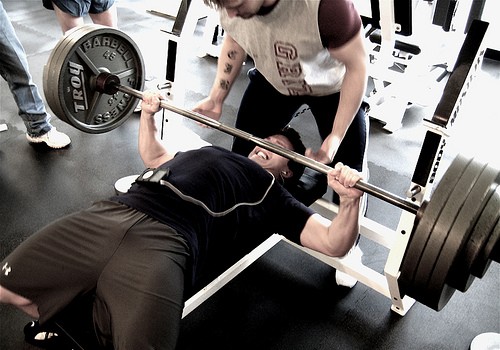
Pushing Exercises: More Than Bench Presses (Kind Of)
Everyone who trains loves to push. Pressing variations litter the average gym-goer's training plan. But there are better and worse variations. Try these out if you haven't already: Floor Press Floor presses have the advantage over bench presses that they're closed chain, ie your feet are on the floor, and that they offer slightly less range of motion. If you have bad shoulders or the last few inches of the bench are a problem for you, or if the bench is constantly occupied, try floor pressing. Dumbells are the best option for this exercise. Lie on your back, with your feet just under your butt, with the soles of your feet on the floor. Press your hips up into a 'glute bridge' and stay there as you press dumbells just like a bench press. Headstand/Handstand Pushups: Full range of motion handstand pushups are for the advanced trainee only. That's like pressing your bodyweight overhead, while upside down. Start out lighter, either with static holds of the handstand position or with handstand pushups that only use the top quarter of the movement. These are a lot harder than they look. Remember to look forward, not at the floor, and keep your...
Everyone who trains loves to push. Pressing variations litter the average gym-goer's training plan. But there are better and worse variations. Try these out if you haven't already: Floor Press Floor presses have the advantage over bench presses that they're closed chain, ie your feet are on the floor, and that they offer slightly less range of motion. If you have bad shoulders or the last few inches of the bench are a problem for you, or if the bench is constantly occupied, try floor pressing. Dumbells are the best option for this exercise. Lie on your back, with your feet just under your butt, with the soles of your feet on the floor. Press your hips up into a 'glute bridge' and stay there as you press dumbells just like a bench press. Headstand/Handstand Pushups: Full range of motion handstand pushups are for the advanced trainee only. That's like pressing your bodyweight overhead, while upside down. Start out lighter, either with static holds of the handstand position or with handstand pushups that only use the top quarter of the movement. These are a lot harder than they look. Remember to look forward, not at the floor, and keep your trunk braced throughout the movement.
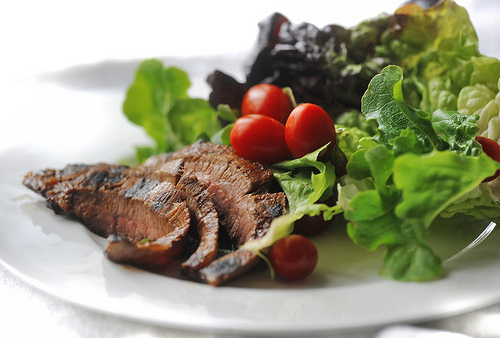
Diet And Training: One Without The Other Is Never Enough
You can diet weight away by restricting calorie intake. But you might not meet your body composition goals that way - most of us would like to be lean and muscular, not starved. And you can exercise your way to impressive muscularity, but if it's buried under billows of flab that make you look like the Stay-Puft marshmallow man that's probably not satisfactory to you either. The point is, you can't out-train your diet. You need to overhaul your food habits when you start training, to ensure that you're on the track to the results you want. Try to eat as much lean protein as you can, don't shy away from fat as long as it isn't intra-abdominal animal fat and don't worry about your carb intake; as long as it's long-chain carbs and you're within your calorific requirements you'll be fine. Finally, eat as much fruit and vegetables as you possibly can. And watch as your efforts in the gym pay off!

Putting It All Together: Making A Training Plan
So you've got some diet advice and a list of exercises. But like we said at the beginning, you also need a plan. I'll provide one below, but after you've been using it a while you'll want to start tweaking it. Bear in mind the principles that training sessions should include a pull move, a push move, a squat of some kind and then everything else, and plan away to your heart's content. Monday: Warm-Up (about ten minutes) Band Pull-aparts 5x10 Bent Row 5x6 (that's 5 sets of 6 repetitions each) Floor Press 5X6 Squat 3x12 Hammer Curls 3x8 per side Rowing Machine Sprint Wednesday: Warm-Up (about ten minutes) Pull-Up - 6X3-5 (try to do at least three, don't be surprised if the first set feels easy) Floor Press 5X6 Split Squat 4X6 per side Woodchoppers 5x6 per side Bent-Over Lateral Raise 3x8 Elliptical cross-trainer rounds - 3 rounds Friday: Warm-up (about ten minutes) Band Pull-aparts 5x10 Bent Row 5x6 Headstands - 3x3-5 Squats 3x12 One-hand overhead press 3x8 per side I've left cardio off Friday because it's Friday. If you're trying to lose a lot of weight, you'll want to do more cardio, but try to stick to the...
So you've got some diet advice and a list of exercises. But like we said at the beginning, you also need a plan. I'll provide one below, but after you've been using it a while you'll want to start tweaking it. Bear in mind the principles that training sessions should include a pull move, a push move, a squat of some kind and then everything else, and plan away to your heart's content. Monday: Warm-Up (about ten minutes) Band Pull-aparts 5x10 Bent Row 5x6 (that's 5 sets of 6 repetitions each) Floor Press 5X6 Squat 3x12 Hammer Curls 3x8 per side Rowing Machine Sprint Wednesday: Warm-Up (about ten minutes) Pull-Up - 6X3-5 (try to do at least three, don't be surprised if the first set feels easy) Floor Press 5X6 Split Squat 4X6 per side Woodchoppers 5x6 per side Bent-Over Lateral Raise 3x8 Elliptical cross-trainer rounds - 3 rounds Friday: Warm-up (about ten minutes) Band Pull-aparts 5x10 Bent Row 5x6 Headstands - 3x3-5 Squats 3x12 One-hand overhead press 3x8 per side I've left cardio off Friday because it's Friday. If you're trying to lose a lot of weight, you'll want to do more cardio, but try to stick to the principle of using intensity rather than a lot of time. Each of these sessions should take between one hour and two, at the very most. And if you stick to the principles set out here, you should see some real results!
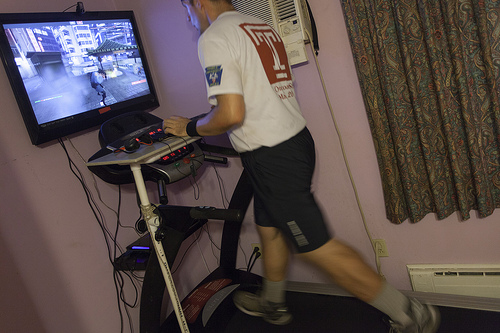
Cardio: Escape The Treadmill If You Dare!
Cardio doesn't need to take up hours to be effective. It should be quick and simple. Try these short bursts for great cardio effects! Rowing Machine Sprints Rowing machines are a great cardio tool. Try spending a few minutes getting into a rhythm, then upping the resistance slightly and going for a three minute 'sprint', as fast as you can. If you can move so fast you don't feel safe, up the resistance! Rest for a minute, then do a 2 minute sprint, rest a minute, do a 1 minute sprint, then call it done. Another option is to use boxing 'rounds' - three minutes' work, one minute's rest. Keep up the pace in the work periods and do 3-5 rounds to get superb results in less time, using whatever cardio movements or equipment you're comfortable with.


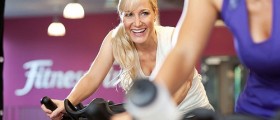
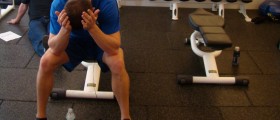
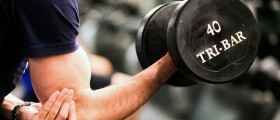


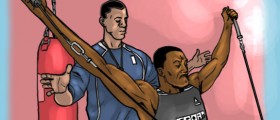

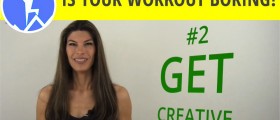


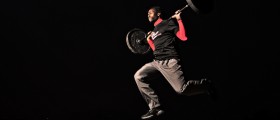
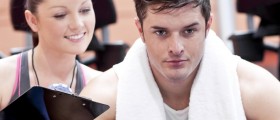
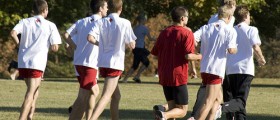

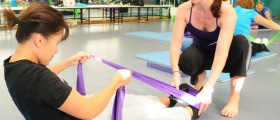
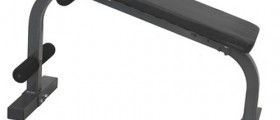
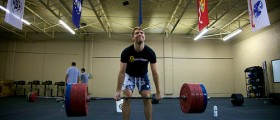
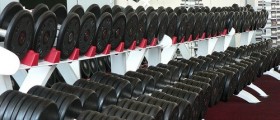

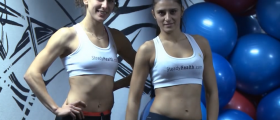


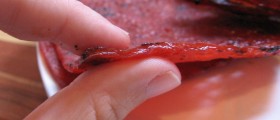
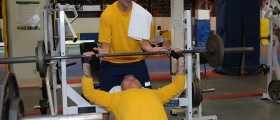
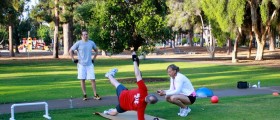
Your thoughts on this
Loading...